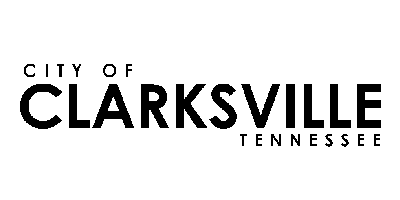-
Description
-
GENERAL STATEMENT OF JOB This is a stand alone classification. Incumbents provide support, maintenance and troubleshooting for the City of Clarksville Public Safety 800 MHz Radio System and installation of specialized equipment and related software (such as two-way radios, mobile data terminals, and video equipment into public safety vehicles). Responsibilities may include monitoring and resolving systemic issues; ensuring network connectivity; establishing user security levels; collecting and analyzing information on available hardware and software; making recommendations regarding hardware and software purchases; maintaining FCC licenses; maintaining an inventory of all equipment; and updating databases.
***PLEASE NOTE: THIS POSITION WILL REMAIN OPEN THROUGH MAY 7, 2025, OR UNTIL FILLED.***
-
Example of Duties
-
SPECIFIC DUTIES AND RESPONSIBILITIES Essential Functions:
Installs, replaces, modifies upgrades, and maintains public safety equipment, including but not limited to emergency vehicle equipment, radios, Mobile Data Terminals, and In-Car Video Systems. Provides technical consulting support on radio communications device functionality, improvements and modifications for various users. Oversees maintenance support for users and reviews and implements requests for changes to system features and radios. Plans, schedules, and implements hardware and software changes and updates. Maintains awareness of various radio systems life cycles and makes recommendations regarding upgrade/replacement of components to assure reliability/sustainability. Monitors inventory of radios to ensure there is adequate replacement in the event of an emergency. Performs other related work as required.
-
Typical Qualifications
-
MINIMUM EDUCATION AND TRAINING
Education and Experience
-
Associate's degree and three years' experience with equipment and software in area of responsibility. -
An equivalent combination of education and experience sufficient to successfully perform the job's essential duties.
License and Certifications
- A valid driver's license.
- FCC General Radiotelephone Operators License (GROL), prefered but not required.
-
Supplemental Information
-
MINIMUM QUALIFICATIONS AND STANDARDS REQUIRED
Knowledge, Skills, and Abilities
Knowledge of:
- Applicable hardware, software, and peripheral devices;
- Client/server environments;
- Network communication design, implementation, and maintenance;
- Diagnostic analyzer tools and equipment;
- Network operating systems;
- Customer service principles;
- Recordkeeping principles;
- Basic inventory principles.
Skill in:
Troubleshooting and resolving hardware, software, network, and peripheral problems; Providing customer service; Utilizing diagnostic analyzers and related equipment and tools; Preparing records and reports; Installing and configuring network services and protocols, hardware and software, and related peripherals; Communicating technical information to a non-technical audience; Monitoring inventory; Communication, interpersonal skills as applied to interaction with subordinates, coworkers, supervisor, the general public, etc. sufficient to exchange or convey information and to receive work direction.
Physical Requirements: The work is medium work which requires exerting up to 50 pounds of force occasionally, and/or up to 30 pounds of force frequently, and/or up to 10 pounds of force constantly to move objects. Additionally, the following physical abilities are required:
Balancing: Maintaining body equilibrium to prevent falling while walking, standing, or crouching on narrow, slippery, or erratically moving surfaces. The amount of balancing exceeds that needed for ordinary locomotion and maintenance of body equilibrium. Climbing: Ascending or descending ladders, stairs, scaffolding, ramps, poles, and the like, using feet and legs and/or hands and arms. Body agility is emphasized. Crawling: Moving about on hands, knees, hands, and feet. Crouching: Bending the body downward and forward by bending leg and spine. Feeling: Perceiving attributes of objects, such as size, shape, temperature, or texture by touching with skin, particularly that of fingertips. Fingering: Picking, pinching, typing, or otherwise working, primarily with fingers rather than with the whole hand as in handling. Grasping: Applying pressure to an object with the fingers and palm. Hearing: Perceiving the nature of sounds at normal speaking levels with or without correction. Ability to receive detailed information through oral communication, and to make the discrimination sound. Kneeling: Bending legs at knee to come to a rest on knee or knees. Lifting: Raising objects from a lower to a higher position or moving objects horizontally from position-to-position. It occurs to a considerable degree and requires substantial use of upper extremities and back muscles. Mental Acuity: Making rational decisions through sound logic and deductive processes. Pulling: Using upper extremities to exert force to draw, haul or tug objects in a sustained motion. Pushing: Using upper extremities to press against something steady to thrust forward, downward, or outward. Reaching: Extending hand(s) and arm(s) in any direction. Repetitive Motion: Substantial movements (motions) of the wrist, hands, and/or fingers. Speaking: Expressing or exchanging ideas by means of the spoken word including the ability to convey detailed or important spoken instructions to other workers accurately and concisely. Standing: Particularly for sustained periods of time. Stooping: Bending body downward and forward by bending spine at the waist. It occurs to a considerable degree and requires full motion of the lower extremities and back muscles. Talking: Expressing or exchanging ideas by means of the spoken word including those activities in which they must convey detailed or important spoken instructions to other workers accurately, loudly, or quickly. Visual ability 1: sufficient to perform an activity like preparing and analyzing data and figures; transcribing; viewing a computer terminal; and/or extensive reading. Visual ability 2: sufficient to include color, depth perception, and field vision. Visual ability 3: sufficient to determine the accuracy, neatness, and thoroughness of the work assigned or to make general observations of facilities or structures. Visual ability 4: sufficient to operate motor vehicles and/or heavy equipment, both day and night. Visual ability 5: sufficient to perform an activity such as: visual inspection involving small defects, small parts, operation of machines; using measurement devices; and/or assembly or fabrication parts at distances close to the eyes. Walking: Moving about on foot to accomplish tasks, particularly for long distances or move from one work site to another.
|
 City of Clarksville
City of Clarksville $47,480.00 - $71,220.00 Annually
$47,480.00 - $71,220.00 Annually
 please see the city of clarksville's benefits page for applicable benefits information.
please see the city of clarksville's benefits page for applicable benefits information.


 May 24, 2025
May 24, 2025 

